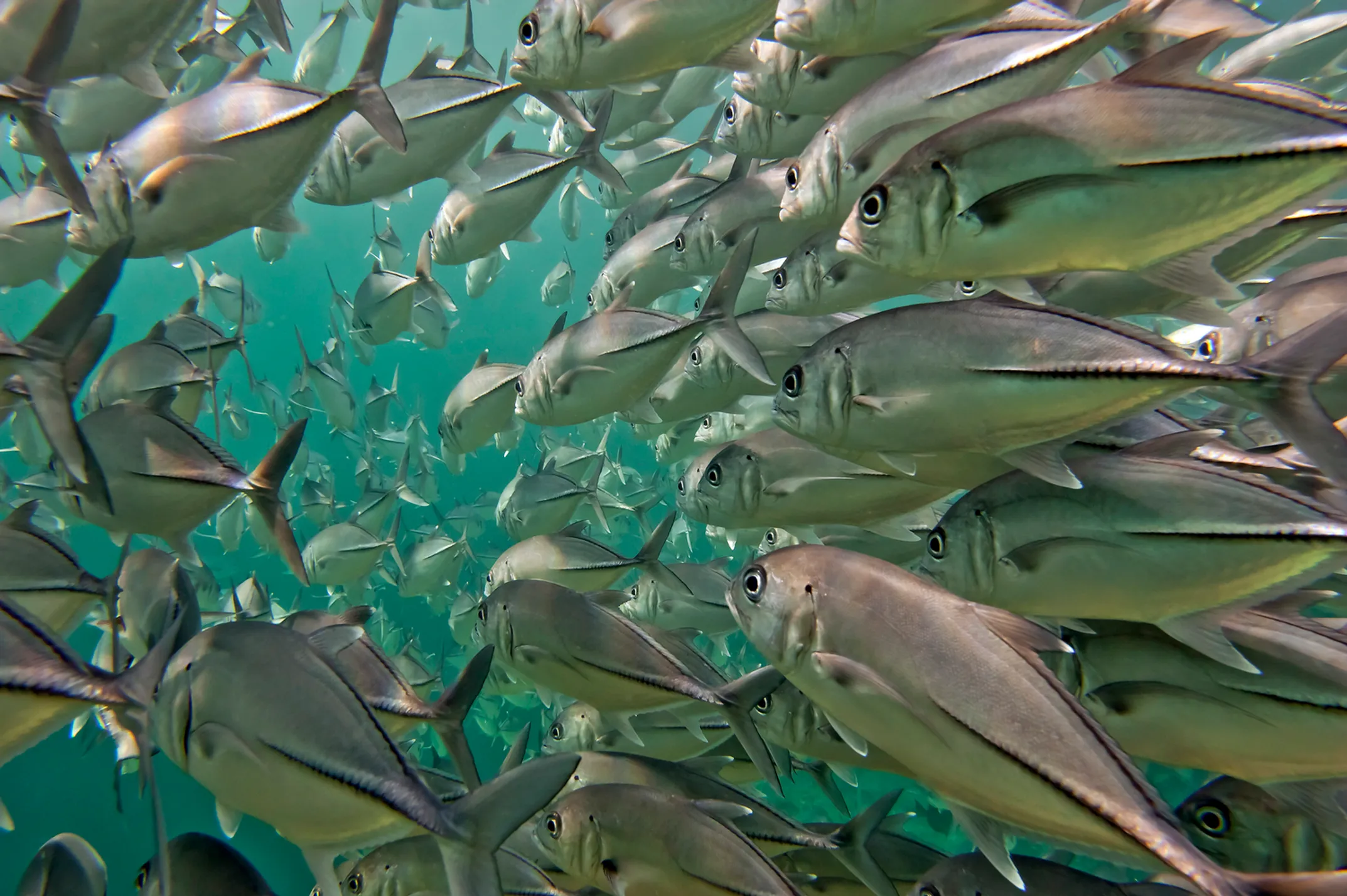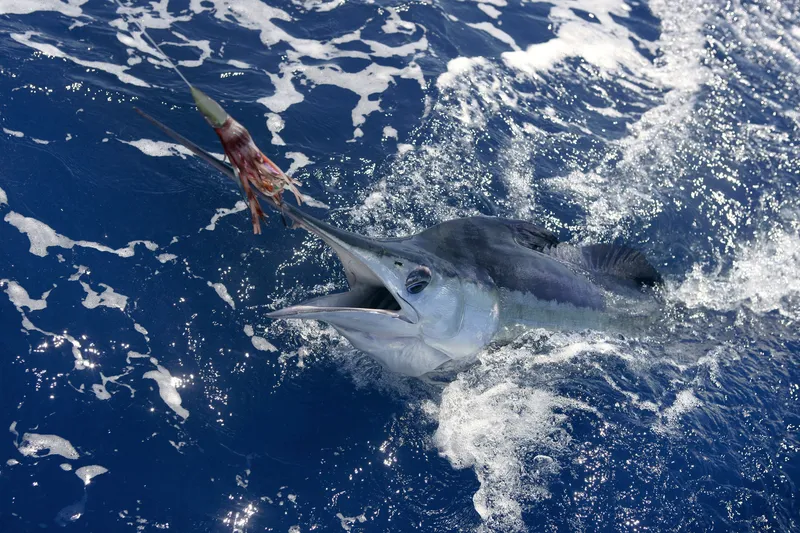

The Titans of the Pacific
Meet Hawaii's legendary game fish - each with its own personality, challenge, and story
Pacific Blue Marlin (A'u)
The Ultimate Test

The Pacific Blue Marlin is the undisputed king of Hawaiʻi's offshore waters. It's the ultimate prize for any big-game angler. The Kona Coast is rightly known as the "Marlin Capital of the World." It's the only place on Earth where "granders" - marlin over 1,000 pounds - have been caught every single month.
These are incredibly fierce predators. They're known for spectacular jumps and punishing runs that test even the most experienced angler's will. A marlin doesn't just bite. It attacks. It uses its formidable bill to slash and stun prey - tuna, mahi-mahi, squid, or flying fish - before swallowing them whole.
Key Facts
While Pacific Blue is the most common and largest marlin here, you may meet its cousins. Striped Marlin is a traveling species often found in schools during winter and spring. This creates the exciting chance of multiple hookups at once. Black Marlin is a rarer, powerful visitor that adds to our billfish mystique.
Yellowfin Tuna (Ahi)
The Golden-Finned Bull
In Hawaiian, ahi means "fire." This perfectly captures hooking one of these golden-finned torpedoes. The moment an ahi strikes, it's like hooking a freight train. They're famous for blazing speed - up to 50 mph - and incredible power and stamina. This makes for a grinding, back-straining fight.
Beyond the thrill, ahi is central to Hawaiian cuisine. It's the star of everything from fresh poke to perfectly seared steaks. Anglers here encounter two main ahi types. There are smaller, schooling yellowfin that average 40-50 pounds. These provide consistent action year-round. Then there are the giants - massive "bull" yellowfin that can exceed 200 pounds.
Key Facts
In cooler winter months, anglers fishing deeper waters may encounter Bigeye Tuna, or mebachi. This is another prized, powerful tuna family member that provides incredible fights and exceptional eating quality.
Mahi-Mahi (Dorado)
The Dazzling Jewel
No sight in fishing matches a fresh-caught Mahi-Mahi. Their bodies shimmer with blues, greens, and golds. They're living jewels that flash with electric color when excited. But don't let beauty fool you. Their Hawaiian name means "strong." This nods to the spectacular, high-flying show they put on when hooked.
They're eager and hungry feeders, often traveling in schools. This makes them a favorite for anglers of all skill levels. The key to finding Mahi-Mahi is looking for structure in open ocean. They're drawn to floating objects - natural weed lines, driftwood, or state-managed Fish Devices (FADs) that dot island waters.
Key Facts
Where you find floating cover, you'll likely find Mahi-Mahi lurking below, ready to attack unsuspecting baitfish. Their schooling nature means that where you find one, you'll often find many more.
Wahoo (Ono)
The Ocean's Torpedo
The name says it all. In Hawaiian, ono means "delicious" or "good to eat." Anyone who has tasted its firm, white, flaky meat will agree it's well-named. The ono is a marvel of hunting design. It has a long, slender, streamlined body built for incredible speed bursts - up to 60 mph.
They're armed with jaws full of razor-sharp teeth, making them fierce hunters. Ono are often solo predators, though sometimes found in small groups. They patrol underwater ledges and drop-offs near the coast. Their hunting style is pure aggression.
Key Facts
They're famous for high-speed, slashing strikes on trolled lures. They often hit with such speed that the reel screams without warning. The fight is fast and furious. It's a true test of an angler's reflexes and gear quality.
Other Notable Catches
🗡️ Shortbill Spearfish (Hebi)
A beautiful, more common billfish family member that's especially abundant in fall. Great for anglers wanting billfish action.
🐟 Skipjack Tuna (Aku)
A feisty year-round catch that provides great light-tackle fun and serves as excellent live bait for larger predators.
🎣 Deep 7 Bottomfish
For bottom fishing: vibrant red Onaga and delicate pink Opakapaka offer a different challenge from the deep reef world.
🦈 Sharks
Various shark species may be encountered, typically released. Always respect these apex predators and ocean guardians.
🗺️ Deep Sea Fishing Guide
📏 Size Comparison
💡 Pro Tips
- Marlin are most active during dawn and dusk
- Look for bird activity to find tuna schools
- Mahi-mahi love floating debris and FADs
- Wahoo prefer deep drop-offs and ledges

